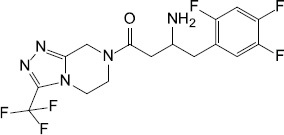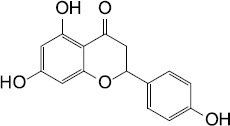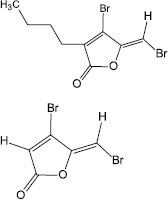TABLE 2.
Studies on controlling biofilm by targeting QS signaling receptors.
| Source | QS-inhibiting agents | Chemical structure | Target bacteria | Effects | References |
| Lactobacillus | 3-Phenyllactic acid (PLA) |  |
P. aeruginosa | Bound to QS receptors RhlR and PqsR with high affinity, thus inhibited the expression of virulence factors such as protease, pyocyanin and rhamnolipids that are involved in the biofilm formation | Chatterjee et al., 2017 |
| Synthesis | Sitagliptin |  |
P. aeruginosa | Interacted with LasR receptors, and significantly inhibited the biofilm formation | Abbas et al., 2020 |
| Plant | Naringenin |  |
P. aeruginosa | Competed with OdDHL by directly binding the QS regulator LasR, inhibited the production of the QS-regulated virulence factors, pyocyanin and elastase | Hernando-Amado et al., 2020 |
| Plant | Fructose-furoic acid |  |
Uropathogenic E. coli | Competed with the SdiA native ligand C8HSL to down regulate its target specific expression and biofilm phenotypic characters | Vinothkannan et al., 2018 |
| Synthesis | Furanones |  |
P. aeruginosa | Competed with the native autoinducers to bind to the AHL receptors, and significantly decreased virulence factor production and biofilm formation | Proctor et al., 2020 |
| Synthesis | Meta-bromo-thiolactone |  |
P. aeruginosa | Inhibited receptors LasR and RhlR, prevented virulence factor expression and biofilm formation | O’Loughlin et al., 2013 |
| Synthesis | N-phenyl-4-(3-phenylthioureido) benzenesulfonamide |  |
E. coli(EAEC) O104:H4 | allosterically modified AI-3 receptor QseC, impeded virulence expression and decreased biofilm formation | Curtis et al., 2014 |
